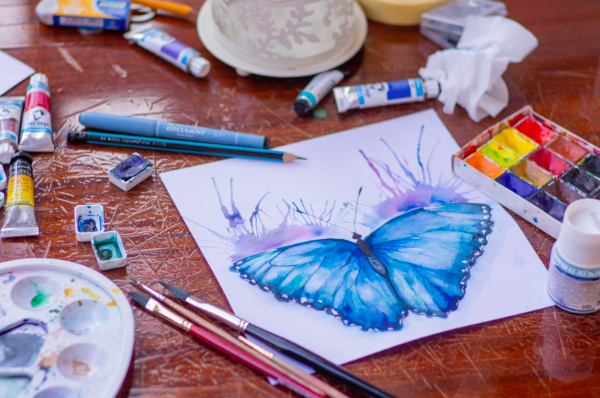Arts and crafts have a wide range of positive effects on mental health, especially on anxiety, depression, and dementia.
The advantages of creating and appreciating art have long been recognised. Studies have repeatedly demonstrated that art may boost mental health, enhance the quality of life for dementia patients, and even help those with developmental disorders like autism and ADHD with their social and emotional development.
Even though art therapy has a wide range of applications and is improving the quality of life for many people, new applications are constantly being found. In this post, we’ll look at how and why art therapy is effective in reducing anxiety and depression symptoms, as well as dementia.
There are many and varied advantages of arts and crafts for mental health. With a few basic materials, you can try a variety of crafts at home. The Hobby Lobby weekly ad is always packed with art and craft supplies that have been discounted to very affordable prices. You can buy a few supplies to try some DIY crafts, or you can attend art and crafts classes and clubs to maximise the advantages.
Seeing art improves our mood
Our mood is positively affected by art, even just viewing it. Anything that can inspire amazement and wonder, whether a stunning work of art or a scene from nature, causes the production of potent neurochemicals that improve our mood.
“Awe has many essential implications for our well-being,” say psychologists. Awe-inspiring experiences can give us a sense of hope and fulfilment. And it makes sense, given that the natural world and art are two of the most potent motivators for people, especially when it comes to creative endeavours.
Making art is a relaxing activity
The mind is far more peaceful and clear when actively engaged in the creative process. Someone can learn to be more attentive to the current moment by having to pay meticulous attention to detail, as is necessary when producing art. Art can be thought of as a form of meditation in this sense, and similar to regular meditation practice, making art regularly has the effect of training the mind to be more still, calm, and focused. According to research, it can even help increase attention span and counteract the tendency of the mind to wander.
Creation as opposed to destruction
When a person is worried or depressed, their mind might spiral into negative thought patterns, often connected to things that have already happened or could happen in the future. On the other hand, the act of creating is the antidote to these harmful inclinations since it gives the mind something constructive to concentrate on and grounds a person in the here and now rather than letting them become lost in negative ideas and unsettling emotions.
The therapeutic potential of art
Making art is a fulfilling and joyful activity that contributes to feelings of self-worth and self-appreciation. It can also motivate someone and give them a sense of purpose. These effects can be seen in any artistic medium, including painting, drawing, textiles, and sculpture. However, research demonstrates that moulding clay things is especially advantageous for those who have experienced trauma or abuse. This art form helps to bring relief on a physical as well as emotional level because of the physicality and tactility involved. Both making and appreciating art have a great deal of healing potential.
Summary
Dementia and the symptoms of anxiety and depression can all be effectively treated with art therapy. Arts and crafts have a wide range of positive effects on mental health. You can participate in art and craft classes or try a variety of activities at home with a few simple supplies. For individuals who have suffered trauma or abuse, moulding clay objects is very beneficial. Making art is a rewarding and enjoyable hobby that helps people feel good about themselves and appreciate themselves. Additionally, it can inspire someone and give them a sense of purpose.











